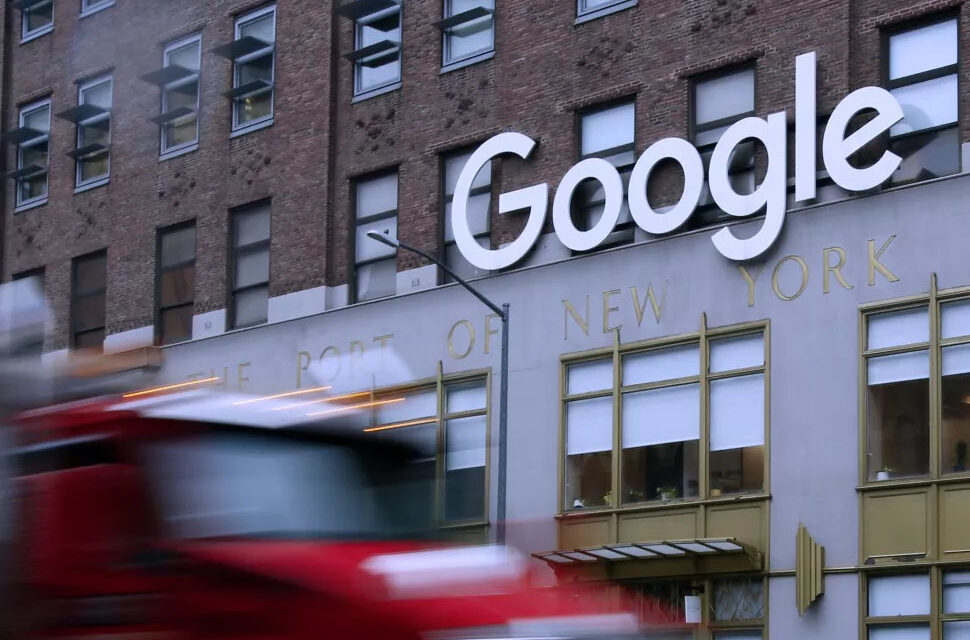(Image credit: Getty Images)
By ( )
Source: www.nexttv.com, January 2023
Why the investigation may open up an opportunity for the television industry to steal back some ad budget
The Department of Justice finally announced that it was going after Google for monopolizing the digital advertising universe.

That’s all well and good, and while I suspect that the overall unpopularity of big tech with voters of both parties is a huge factor in why this is happening now, it may open up an opportunity for the television industry to steal some ad budget.
Let’s start by reviewing how we got here and why digital display advertising was able to steal so many ad dollars from TV in the first place.
It all goes back to that old apocryphal story of the department store magnate who said, “I know that half the money I spend on advertising is wasted. I just don’t know which half.”
Which of course was the issue with TV: It was hard to measure, and brands had to trust that when they increased TV spending, they also upped awareness, which then spiked sales.
TV was all about reaching as many people as possible, all at the same time — about creative executions that became part of pop culture and about creating awareness for big national brands.
But as budgets expanded well into the nine-digit range, there was lingering fear about the half that was being wasted.
What if there was a way around it?
Enter Google, Facebook and an army of digital publishers. Not only could they account for every single person who viewed an ad (and on mobile and digital, it was a single person, not a household full of different people) but they could also tell you exactly what each person did after seeing the ad.
All presented in slick Powerpoints filled with brightly colored charts.
If you were a brand manager with a nine figure budget, those charts were a far better CYA move than any charts the television networks could provide.
Now of course, those charts often relied on something known as “last click attribution” which posited that if someone clicked on a BMW banner and made an appointment to visit the dealership and eventually bought a 5-Series sedan, the display ad they clicked on was the reason why.
Even if the banner showed up when the user searched for “BMW dealers near me.”
Common sense said this was not actually the case, that a high value purchase like a car was not undertaken as the result of seeing a single banner ad. But common sense went out the window when you were in charge of a $300 million ad budget and could use all those colorful charts to justify the size and effectiveness of your ad budget.
So money got shifted, the “TV is Dead” drumbeat started and a whole lot of digital ad gurus and sherpas cropped up to reassure brand managers and their agencies that taking advantage of the more precise targeting that digital offered placed them among the truly enlightened.
Not every brand skipped happily down this path — there were many that continued to spend on TV, and were sneered at as being hopelessly out of touch for doing so, but the pressure was always there along with the headlines suggesting that digital was the future.
But then along came streaming, which was digitally delivered and could thus provide the sort of meaningful metrics that were never before possible with television advertising.
Which is why this might be the time for TV to strike back.
The DOJ focusing on how unfair Google’s ad practices are might focus brands on the folly of over-investing in digital.
Yes, it’s a good way to drive traffic and create leads. Yes, it is easily trackable. And yes, search is an amazing way to target people who are actively looking for your product. But that’s just a part of what brands need from their marketing campaigns.
They need awareness, they need an image, but most of all they need an emotional connection with viewers, which is something only TV can give them.
While it’s something of a cliche at this point, it is also very true that people can remember TV commercials they saw 20 years ago, but struggle to remember display ads they saw 20 minutes earlier.
The emotional connection — ”capturing the head and the heart” — is not always easy to measure or to gauge the impact of, but it is incredibly valuable over the long term. Just look at how much of a pass Southwest Airlines got from their customers after their Christmas meltdown because they’d spent years developing a positive brand image and connecting with flyers emotionally, not just rationally.
Which is the exact argument I’d use if I were pushing TV advertising — it creates a long term connection, not a short term one, and that this is its real value, to make brands likable enough so that they can be bulletproof or relatively bulletproof if and when something goes wrong.
Something, I suspect, no digital display ad has ever done.

